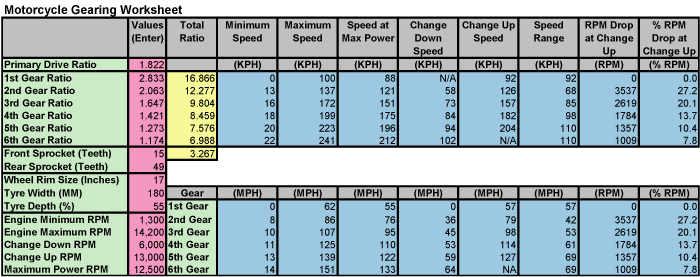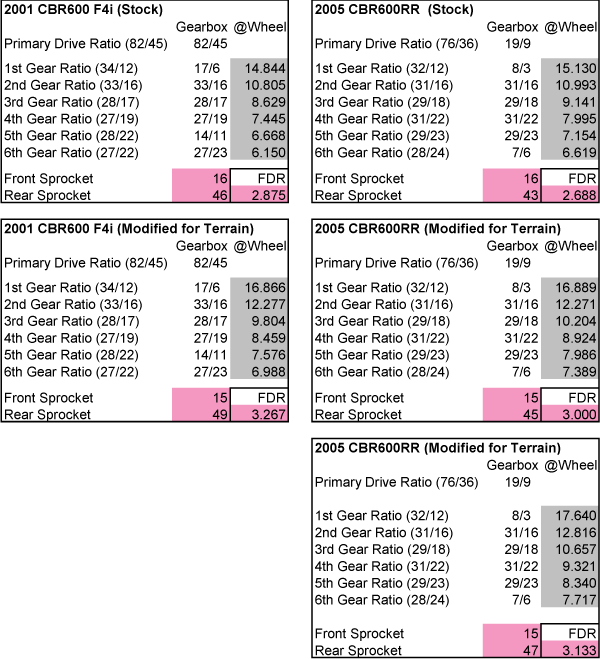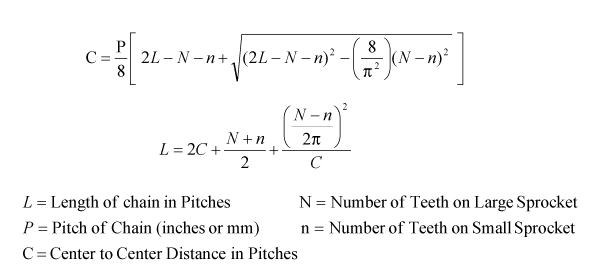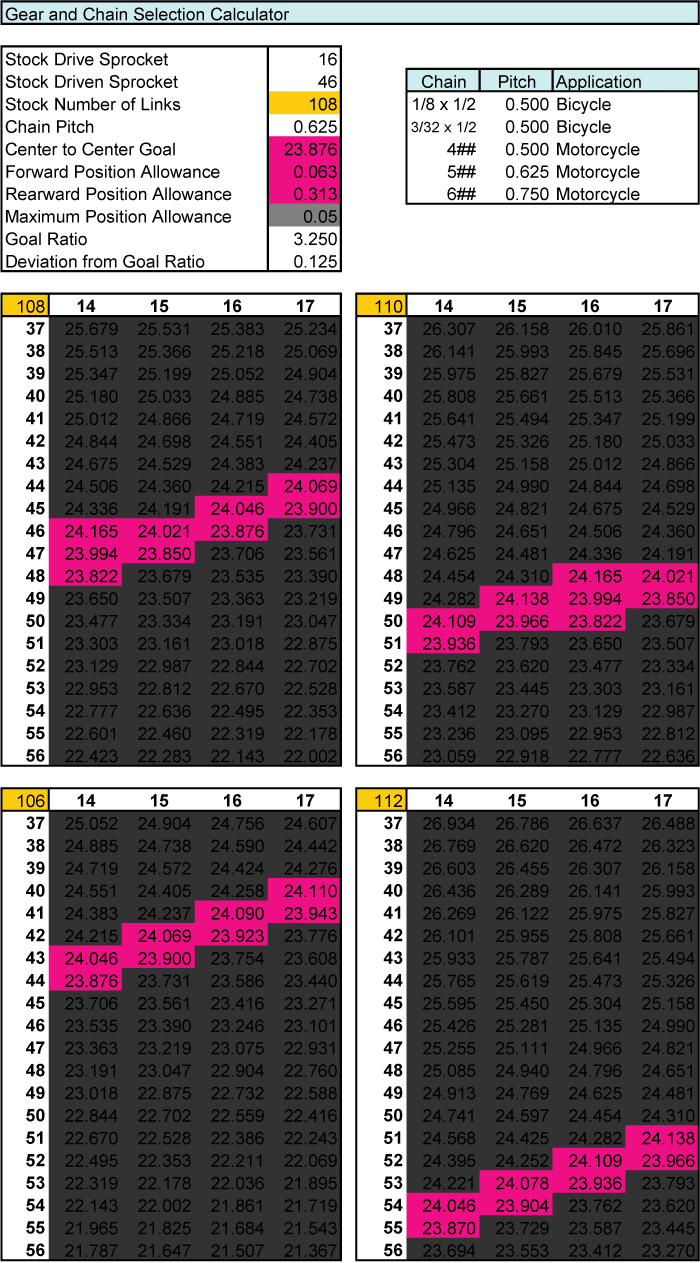
Final Drive Ratio: The final drive ratio will reflect how many times the countershaft will rotate for every rotation of the rear wheel. The greater this number, the lower the gear. As the gear gets lower, ability to accelerate goes up and peak speed goes down.

Based on information gleaned from a graph similar to the one above and countless hours of test riding, you should choose a FDR. A table makes it easy to target combinations that may work well for you.

I changed my gearing from 15/47 (stock was 16/46) to 15/50 to gain faster exit acceleration on the hilly hairpin turns where I usually ride. The change made a remarkable difference in that area plus, I actually go into 3rd gear now. I no longer have a lag coming out of turns in 2nd gear while my engine gets up enough RPM to make good power. I'm also coming into turns a little hotter. With such a small distance to build speed for the next turn, being in the correct power band out of the last turn maximizes what space I have to make that speed. This change definitely affected by top speed, reducing my theoretical maximum speed to 148mph from stock 171mph (new actual is about 115mph, never forget wind resistance). This is not that big of a deal for me since I rarely go much over 110mph on street. The one problem with this gear is that the bike felt violent in the sense that I could not relax and had be on 100% while on the bike. I am currently trying 15/49. It is a more comfortable gear than the 15/50, but leaves me hanging at times. I'm sort of caught in between for now. One nice thing about running 15/49/110 is that I can quickly switch to 16/50/110 and be in a perfect gear for tracks and level areas. (also 16/49/110, 15/50/110 fit very nice)

You can generate a similar chart HERE.
I just purchased a new 2005 CBR600RR. I figure that I can use the homework I've done getting my F4i geared for my local terrain. The RR is slightly more powerful than the F4i, but I do not think so much that the gearing would have to be much taller. Also, I have really wanted a lower 3rd gear for faster hilly terrain. Below is a comparison of the two bikes and gears. Note how with a 15/45/110 gearing, after second gear, the RR has a lower gearing. If in fact, a 15/47/112 gear works best where I ride.

Once an appropriat FDR is chosen, then you need to place the rear axle in the correct position. This is done by selection the correct gear/chain length combination.
Rear Wheel Position:
The selection of final drive reduction gears should factor in wheel position as well as reduction ratio. I feel that very close to stock is desirable for motorcycle handling. If you want to make subtle adjustments, you should know what you are doing regarding chassis set-up. Changing rear wheel position changes overall wheelbase as well as the amount of leverage that the rear wheel has against the mass center of the system. Also, squat behavior and rear wheel trail are both changed.
Also, "The required spring rate to achieve the same wheel rate varies with the square of the leverage ratio. On an R1, with a swingarm nearly 600mm long, moving the rear wheel 15mm is a 2.5% change in leverage ratio, which gives a 5% change in spring rate: roughly the difference between a 90 and a 95N/mm spring."GB
To be extremely crude in description:
* Move forward for quicker steering or more wheelies
* Move rearward for slower steering or to keep the front wheel down
Target gears are highlighted in the chart below. Gears are chosen due to proximity to stock wheel position. Stock wheel position calculation is theoretical - not actual. The calculations do not take into account slack or chain wear. This does not matter because the choices are consistent to the relative theoretical position. The difference between the theoretical and actual will be extremely minimal in any case.
The most undesirable gear/chain choices (other than those that will not fit) will result in a wheel position that is so far back in the axle slot that very little if any space is available to take up chain elongation slack.
It is also very important to remember that a certian amount of Catenary Sag needs to be present when the chain is installed so that it will not bind as the swingarm travels to its extremes. this is usually dictaded by the service manual.

Each of the four charts are for a different chain length. 16/46/108 is stock for Honda F4i. Once you have a range of gears and chain lengths to choose from, choose which reduction you want. simply divide front by the rear or vis a vis., It doesn't matter how you do it, it is just a ratio comparison.

This site has not been
updated since Fall 2006.
Since then, all new projects
have been place on my wiki
site.
If you like what you see on
this site, Make sure to go
to the wiki for even better
projects.